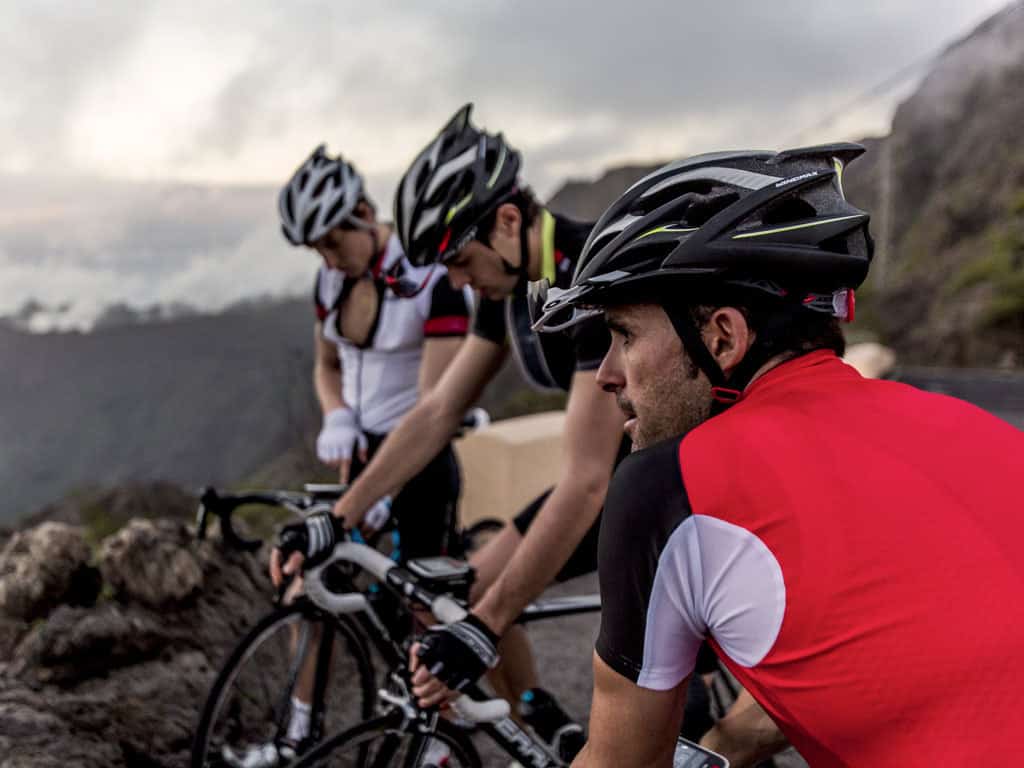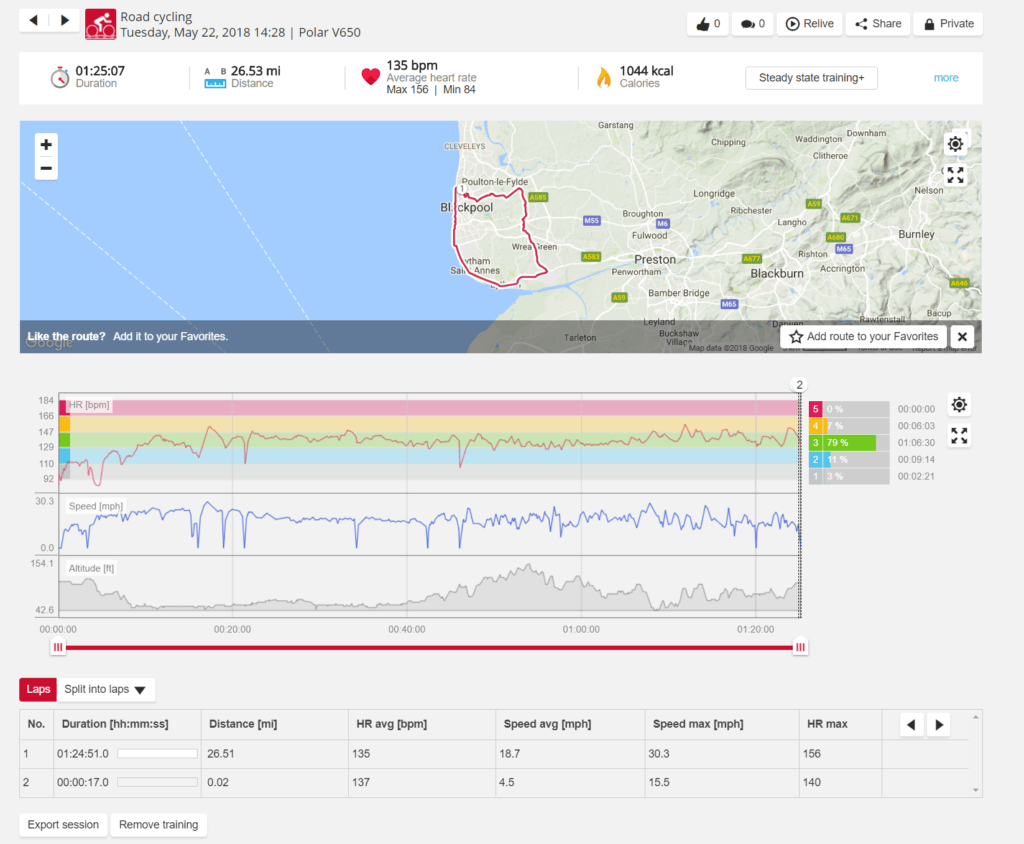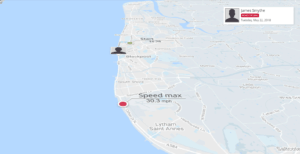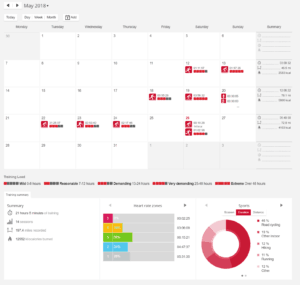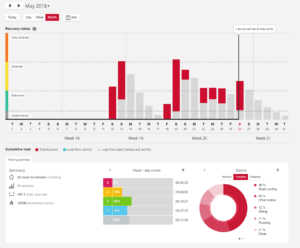Any links to online stores should be assumed to be affiliates. The company or PR agency provides all or most review samples. They have no control over my content, and I provide my honest opinion.
The Polar V650 bike computer has been out for over 3 years now, but Polar has been regularly updating it, with the latest update including Strava Live Segments, so I have been reviewing it with the Polar OH1 for the past couple of weeks.
The V650 is not as popular as Garmin products, but based on price it is an appealing alternative to the Garmin 520 or even more expensive models.
At the time of writing, you can pick up the Polar on Amazon for just £161.90 if you want the chest strap it is £174.50. If you want it bundled with the OH1, you will have to buy it from Polar for £229, and this works out about the same price as buying them individually from Amazon.
In comparison, the Garmin 520 costs £179.00 or £199 with a chest strap.
[button link=”https://amzn.to/2sf5Q4F”] Buy the Polar V650 from Amazon[/button]
Features
With the Polar V650, you get some significant features that the Garmin 520 omits which include a bright and responsive touchscreen with built-in mapping. The 520 does have maps, but it is quite basic.
There are some key omissions though, you don’t get Ant+ functionality which is an omission that will put off some serious athletes, but with the popularity of smart Bluetooth devices, it is less of a concern nowadays.
The Polar is quite a large device compared to the Garmin, and its design looks a bit dated with its chubby curvy edges. This is not a major concern though, as I just want a bike computer to track my workout.
There is a safety light built in, which can auto turn on in dark situations. It is a nice extra feature, but it isn’t an adequate front light if you are riding in the dark. It is better than nothing if you are unexpectedly forced to ride in the dark though.
In the box, you don’t get as many accessories as the Garmin. Primarily there is not out in front mount, the included rubber mount is OK, but I found the computer would slope off to the left or right if I were going over a bumpy road. I eventually bought a cheap mount on Amazon that works the way I would like.
Set-up
In order to set up the device, you need to use Polar FlowSync on your PC then plug it in via microUSB, in the same manner as I had to with the Polar OH1. When you plug it in the first time, it will go through a basic set-up procedure then sync all your settings. Within the device itself, you can tell it to download maps, and it will do this as part of the sync process. If you have live segments or any other routes these will also sync.
There are a lot of comments online about issues with syncing, and I did experience this myself with my main PC, for some reason it just won’t recognise the device, even though the driver is loaded when I check device manager. However, my Garmin 520 is also refusing to sync with my main PC at the moment too, so I suspect there could be something clashing with these sorts of devices. The Polar OH1 never has an issue with syncing.
I was able to get the V650 syncing with my Dell laptop, but I find it can be temperamental with the USB cable you use. Using the pre-bundled one is fine, but others can be 50/50. I have found that thick USB cables are more reliable than thin ones so that it could be an issue with power drawer, but that is just a guess. Once you have got the device into the Polar flow account, you can then pair it up with your mobile to sync data in the future. I found this method was a bit slow, but it seemed reliable for me.
Pairing the V650 with the OH1 was a simple affair, and it works straight away. Unfortunately, I have no other sensors to test. I have Garmin speed and cadence sensor, but they are Ant+ so won’t work.
If you have other Bluetooth sensors, it should pair fine, and this will include chest straps, speed/cadence and smart Bluetooth power meters. It should also work with smart turbo trainers such as the Wahoo Kickr.
Performance
Overall the V650 performed well; I ran it in conjunction with my Garmin 520 for a couple of rides to gauge how well they compared on the same ride. The Garmin has a cadence and speed sensor attached to it, so it will likely be more accurate in certain areas.
Just like the Garmin you can set up profiles and have screens display different information, I like as much info as possible, so my main screen is set to 8 points of data with speed, average speed, duration, calories, heart rate, distance, and incline. There are dozens of different things you can display, especially if you have multiple sensors.
[button link=”https://amzn.to/2sf5Q4F”] Buy the Polar V650 from Amazon[/button]
The touchscreen is great for browsing between screens; I find the Garmin quite difficult to switch screens while riding due to the stiff small buttons.
GPS acquisition and heart rate pick up were quick. I didn’t try the GPS on a bad weather day which is sometimes when GPS can be slow, but overall it picked up the GPS just as quickly as the Garmin. You get some icons along the bottom of the home screen to identify if GPS and HRM are working or not. The same with other sensors.
GPS accuracy was also presumably good, there is a difference between Garmin, but it is hard to tell which is more accurate. On a 65mi bike ride, the recording distances were 66.35 mi for Polar and 65.79 mi for the Garmin 520. On a 35m ride, the distances were 37.34 mi for Polar, 37.15 mi for the Garmin 235 watch, and 36.86 mi for the 520. The differences are also possibly user error with me getting confused starting so many devices.
The reported average speed for the rides were all typically within 0.1mph of each other.
There were a few key points issues I found during the ride. The screen isn’t as clear as the Garmin, on a bright day (which is the only time I ride) it is not unreadable, but the Garmin is noticeably easier to read.
The auto-pause function of the V650 is very slow to initiate; it takes several seconds. You can increase the moving speed which triggers auto-pause, but it doesn’t help much. The obvious reason why there is a significant difference is the Garmin was taking the speed from the bike sensor rather than GPS, so it had immediate speed data. However, I don’t remember the Garmin being as slow when I used it by itself. The differences in average speed would suggest it is not a significant issue.
You can zoom into the maps and get a clear idea of the roads around you, but this is very much a two-handed affair, so it is best to do it just as you start your ride. That being said, once zoomed in I found the maps to be superb. I don’t use them following a route as such, but it helps me with my bearings and avoids me having to stop to use Google Maps. When I am in the Forest of Bowland, Google maps navigation is useless if I start it in the forest, so having an offline map I can follow in front of me is great. It has been a long time since I used the Garmin 1000 but I feel like the quality of the maps was superior on this much cheaper device.
It took me a while to work out how, but if you do plan a route via a service such as a map my ride, you can import it via the flow web service if you go to your favourites. Here you can also see your Strava live segments.
Strava live segments are something I haven’t used before; I do like to see how I have performed on longer segments when I sync my device at home. So it was quite fun to be able to have the segment show up when cycling. I don’t take my cycling super seriously, so it is more a fun feature for me, but I can appreciate how it could be useful for some people wanting to push their performance to the next level. With the popularity of Strava, it is a good feature for Polar to integrate.
Polar Flow
Like many others, I mainly use Strava, but I do like Polar Flow, it is easy to navigate, and the data is presented in an understandable way. The training benefit values are a great way for you to understand your sessions a bit better, Garmin has the training effect rating, which some may prefer, but I would say this is better for most casual users as it explains the what the session has done for you in plain language.
You get a relive option for any GPS tracked activities which is a fun way to experience previous activities or show off your activity. The video follows your route and highlights key points in the ride; it is something that will appeal to people that post everything to social media.
You can zoom into either the maps or the graphs giving you a more detailed view of the session. Within the maps, you can then add a speed or heart rate overlay so you can see exactly where you perform the best.
Overall, it is very comparable to Garmin Connect, they appear to offer the same data, and both are user-friendly, so I would say they are even in terms of my preference.
[button link=”https://amzn.to/2sf5Q4F”] Buy the Polar V650 from Amazon[/button]
Overall
I have been pleasantly surprised with the V650, it has some unfavourable reviews online, with a lot of these issues appear to be related to syncing. While I experienced some issues with my main PC, I found the V650 worked fine with my mobile and my laptop.
The device was launched back in 2015, so I would hope/think that some of these issues have been ironed out for many users.
If you look online at reviews from other established websites apart from the Ant+ most of their negative points, appear to relate to no Strava or mapping, both of which no are no longer an issue.
I have found a like for like comparison with the Garmin 520 is quite hard, the Garmin has several features this doesn’t, in particular, Ant+, while this has significantly better maps and a touchscreen.
I think for many people the Polar V650 is a worthy contender for a GPS bike computer; it has some great features while still be affordable. For your average fair-weather cyclist, mapping, Strava, heart rate and decent GPS tracking are all that is required most of the time, and this device does all of that well.
Polar V650 Review
Overall
87%-
Features - 85%85%
-
Performance - 85%85%
-
Price - 90%90%
I am James, a UK-based tech enthusiast and the Editor and Owner of Mighty Gadget, which I’ve proudly run since 2007. Passionate about all things technology, my expertise spans from computers and networking to mobile, wearables, and smart home devices.
As a fitness fanatic who loves running and cycling, I also have a keen interest in fitness-related technology, and I take every opportunity to cover this niche on my blog. My diverse interests allow me to bring a unique perspective to tech blogging, merging lifestyle, fitness, and the latest tech trends.
In my academic pursuits, I earned a BSc in Information Systems Design from UCLAN, before advancing my learning with a Master’s Degree in Computing. This advanced study also included Cisco CCNA accreditation, further demonstrating my commitment to understanding and staying ahead of the technology curve.
I’m proud to share that Vuelio has consistently ranked Mighty Gadget as one of the top technology blogs in the UK. With my dedication to technology and drive to share my insights, I aim to continue providing my readers with engaging and informative content.

